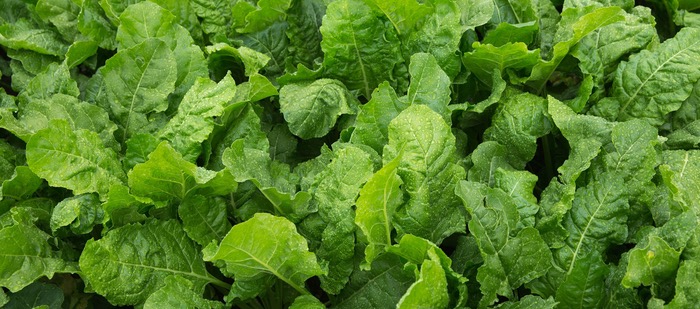Sugar beet crops are coming under intense disease pressure, with conditions for rust infection now proving the greatest concern for growers and agronomists.
Protecting green leaf area in the coming weeks will be crucial to enable plants to build yield – particularly after the challenge of late establishment, followed by effects of heat stress in June. Now the weather has turned unseasonably cool and wet for many areas.
Syngenta technical manager, Andy Cunningham, reported that recent weeks of cool and wet weather conditions have been especially favourable to the development of rust in sugar beet.
Outstanding rust results
In a similar high rust pressure last year, trials in Lincolnshire proved PRIORI Gold delivered 33% better control of the disease, compared to mefentrifluconazole + fluxapyroxad. The two spray PRIORI Gold programme in August reduced the leaf area infected from over 85% of the crop in untreated plots, to less than 20%.

Andy Cunningham
As a result, yields from PRIORI Gold treated beet achieved an average 87 t/ha, compared to less than 75 t/ha in untreated and only 83 t/ha with either mefentrifluconazole + fluxapyroxad or fluopyram + prothioconazole applications.
Furthermore, with a higher sugar content in PRIORI Gold treated roots, the two-spray programme returned more than £680 per hectare additional margin over untreated, compared to just £312/ha or £260/ha return with the other fungicide options respectively that were more expensive and lower performing.
“PRORI Gold was clearly the best product for controlling rust in the trial,” reported Mr Cunningham. “But other trials have repeatedly demonstrated its outstanding broad-spectrum effects on other beet diseases, including Ramularia, powdery mildew and Cercospora too.”
Cercospora risks low
“This summer’s relatively cool conditions have been far less conducive to Cercospora, which is favoured by hot and humid conditions – in excess of 24⁰C and 10 to 15 hours a day at 90% plus humidity,” highlighted Mr Cunningham. The BBRO Cercospora disease model currently predicts low risk to crops across most of the beet area.
“If the BBRO Cercospora forecast does indicate the risk to be rising over the coming weeks, growers’ experience highlighted excellent results with PRIORI Gold control of Cercospora during last year’s extreme heat.” Many growers also combined PRIORI Gold applications with QUANTIS biostimulant treatments, to further alleviate the heat stress effects.
Two actives target disease
mr Cunningham advocated the azoxystrobin element of PRIORI Gold (also marketed in the UK as ANGLE) will be crucial this season for its renowned physiological greening effect, that will enable plants to go on adding root weight and sugar content later in the season. The overall efficacy is further bolstered by difenoconazole that is proven to protect against a broad disease spectrum.
“Together the two actives are incredibly powerful for beet disease control. Furthermore, it is a highly cost-effective option that can deliver higher margins for growers.” Growers can make two applications of PRIORI Gold per crop, at a rate of 1.0 l/ha, with the latest time of application when roots have reached harvestable size (GS49) and not less than 35 days before harvest.




